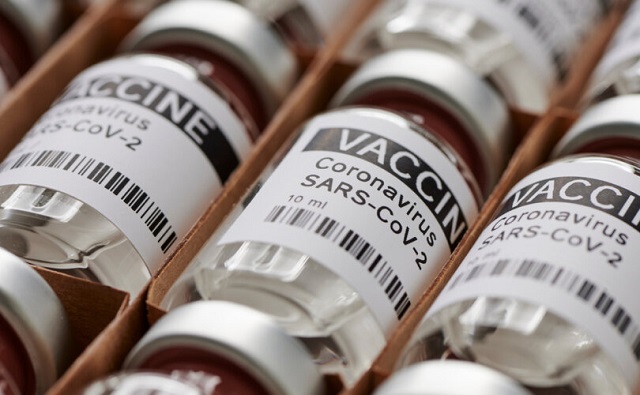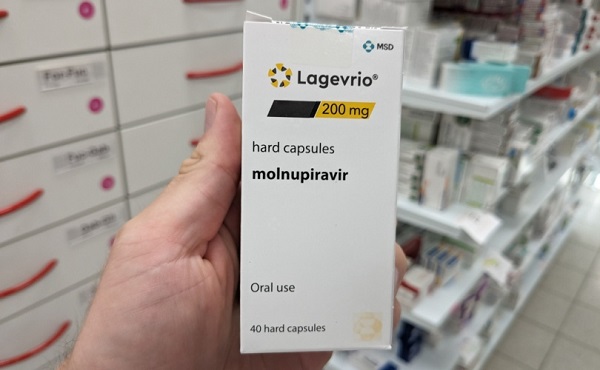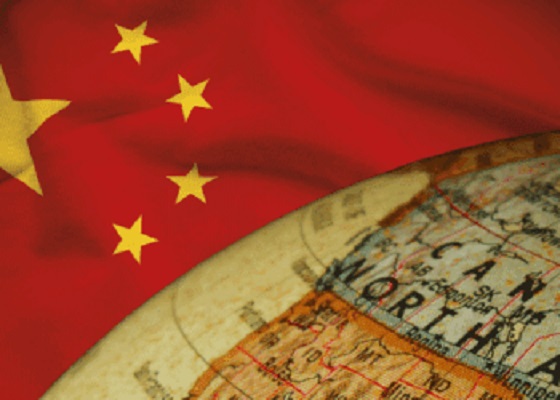COVID-19
‘Highly improbable’: New study exposes flaws in Lancet paper claiming COVID vaccines saved millions of lives

From LifeSiteNews
A new study by all-cause mortality researchers Denis Rancourt, Ph.D., and Joseph Hickey, Ph.D., re-examined the mathematical model behind a paper published in The Lancet claiming the COVID-19 vaccines saved millions of lives. The Lancet paper, cited more than 700 times, was partially funded by the World Health Organization and the Bill & Melinda Gates Foundation.
This article was originally published by The Defender — Children’s Health Defense’s News & Views Website.
When two University of Pennsylvania scientists earlier this month won the 2023 Nobel Prize in Physiology or Medicine for their work in developing “effective mRNA vaccines against COVID-19,” the Nobel Committee and legacy media organizations celebrated the COVID-19 vaccines for saving “millions of lives.”
But a new study re-examining the mathematical model behind the life-saving claims – a model that was laid out in a study published in 2022 in The Lancet Infectious Diseases – concluded the model was deeply flawed and the resulting characterization of the COVID-19 vaccines “must be invalid.”
The Lancet paper, funded by the World Health Organization (WHO) Gavi, the Vaccine Alliance and the Bill & Melinda Gates Foundation, among others, has been cited more than 700 times.
All-cause mortality researchers Denis Rancourt, Ph.D., and Joseph Hickey, Ph.D., calculated and graphed the mortality rates that would have occurred without the vaccines, as projected by Waston et al. in The Lancet study, and compared those projections to the actual all-cause mortality rates.
Rancourt and Hickey tested the assertions in The Lancet paper that the vaccines averted tens of millions of excess deaths, defined as the number of deaths from all causes that exceeds the expected number of deaths under normal conditions.
If The Lancet paper model were accurate, Rancourt and Hickey wrote, without the vaccines the global mortality rates would have spiked to historically unprecedented and unimaginable levels suddenly, a year into the pandemic, at precisely the moment the vaccines rolled out.
And the vaccines would have nearly perfectly reduced those unimaginable levels of mortality back to baseline mortality rates.
They concluded that Watson et al.’s “results and the associated fantastic claims of millions of lives saved are highly improbable,” and that their theoretical claims have “no connection to actual mortality,” but instead are based on “wild” assumptions.
The findings raise questions about the serious failures of the peer review process in top journals, the Nobel award process and the media’s verification processes, according to the authors, who are both part of the Canada-based Correlation Research in the Public Interest.
‘So improbable it should be qualified as impossible’
According to Rancourt and Hickey, given there is no known controlled randomized clinical trial showing the COVID-19 vaccines caused death to be averted, the primary basis for such claims comes from Watson et al., who concluded:
“[Findings] Based on official reported COVID-19 deaths, we estimated that vaccinations prevented 14·4 million (95% credible interval [Crl] 13·7–15·9) deaths from COVID-19 in 185 countries and territories between Dec 8, 2020, and Dec 8, 2021.
“This estimate rose to 19·8 million (95% Crl 19·1– 20·4) deaths from COVID-19 averted when we used excess deaths as an estimate of the true extent of the pandemic …
“[Interpretation] COVID-19 vaccination has substantially altered the course of the pandemic, saving tens of millions of lives globally.”
To test the validity of the model’s projections, Rancourt and Hickey used Watson et al.’s data to calculate what the all-cause mortality would have been over time for 95 countries if the researchers’ claims were true and no COVID-19 vaccines were administered.
To compare the implications of those claims to actual all-cause mortality, they distributed the paper’s most conservative estimate of “14.4 million deaths averted” globally, calculating the number of deaths averted per country as a mathematical combination over time of vaccines administered and vaccine effectiveness.
They created graphs to show how Watson et al.’s theoretical all-cause mortality rates without the vaccine compared to actual all-cause mortality rates.
The graphs also show all-cause mortality rates prior to the pandemic and note the date the WHO declared the global pandemic and the date of the vaccine rollouts for each country.
In the U.S., for example (Figure 1), there were unprecedented peaks in all-cause mortality in 2020, 2021 and 2022 that the researchers have tied, in other papers, to pandemic measures such as the widespread use of ventilators, and to mortality associated with the vaccine itself.
Those peaks can be seen in the blue line on the graph, which shows the actual all-cause mortality. The projected scenario from Watson et al’.s paper is plotted in red.


Figure 1. United States (USA): (top panel) All-cause mortality by week, 2018-2022, measured (blue), calculated following Watson et al. (2022) (red-solid), continued (red-dashed); (bottom panel) same, expressed as excess all-cause mortalities, and with 1σ uncertainty (shaded blue). In both panels, cumulative COVID-19 vaccine administration (all-doses) (dark grey), March 11, 2020 date, (vertical grey line). Credit: Denis Rancourt, Ph.D., and Joseph Hickey, Ph.D.
If their numbers are correct, the graph shows, a “massive and more-than-unprecedented” national excess mortality would have occurred if the COVID-19 vaccines had not been rolled out, and that spike would have coincidentally happened at precisely the moment when the rollout happened to occur, but not before.
“This would be a remarkable coincidence,” Rancourt and Hickey wrote, especially given this spike would have happened suddenly after several waves of infection and one year after the pandemic was declared.
It is also notable, they said, that the vaccines supposedly lowered all-cause mortality rates to precisely the pre-pandemic numbers, rather than to some intermediary number.
A similar phenomenon would have happened, they said, in Canada according to Watson et al.’s calculations. Unlike the U.S., Canada had very minimal changes in all-cause mortality through the entire pandemic period.
However, the calculations by Watson et al. predict that Canada would have seen a tripling in all-cause mortality by week for approximately a year if the vaccines had not been rolled out, the authors wrote.


Figure 2. Canada (CAN): (top panel) All-cause mortality by week, 2018-2022, measured (blue), calculated following Watson et al. (2022) (red-solid), continued (red-dashed); (bottom panel) same, expressed as excess all-cause mortalities, and with 1σ uncertainty (shaded blue). In both panels, cumulative COVID-19 vaccine administration (all-doses) (dark grey), March 11, 2020, date (vertical grey line). Credit: Denis Rancourt, Ph.D., and Joseph Hickey, Ph.D.
In Canada, there is also “no visible decrease in actual all-cause mortality” temporally associated with the roll-outs, which one might expect if the roll-outs affected mortality. Rather, they wrote, “the opposite is apparent, with excess mortality proportionately accompanying rollouts.”
They also presented data from 31 European countries, whose situation was analogous to the U.S. “This extraordinary coincidence” they wrote, “essentially occurs in most of 95 countries [they analyzed].”
“In fact, the said coincidence is palpably so improbable that it should, without hesitation, be qualified as impossible,” Rancourt and Hickey wrote. “A single such example in a single country is sufficient to invalidate the exercise of Watson et al. (2022), and the example is repeated for 95 countries.”
‘The opposite of good science’
Rancourt, former physics professor and lead scientist for 23 years at the University of Ottawa, told Children’s Health Defense Staff Scientist J. Jay Couey, Ph.D., on a recent episode of Couey’s Gigaohm Biological livestream, that the Nobel Prize is a powerful political instrument.
Although there are some exceptions where Nobel has recognized authentically important scientific achievements, he said, “Generally speaking the Nobel Prize is an instrument of the establishment for propaganda, to convince people of what things they need to consider to be absolutely true, absolute advancements of human knowledge.”
“It impacts not only the general public but also scientists themselves,” in terms of what they believe and what they research, Rancourt said.
When the 2023 Nobel Prizes were announced, and the legacy media universally made claims about tens of millions of lives saved, Rancourt and Hickey decided to investigate the publication behind the claims: the Waston 2022 paper.
He said they found the paper was “the opposite of good science.”
That was not, Rancourt noted, because the mathematical calculations were wrong, but because the authors made no attempt to examine whether the assumptions behind their model inputs were logical, or whether their predictions were “reasonable and realistic,” meaning they could occur in the real world.
Rancourt told Couey after doing their analysis, he and his colleagues found the claims in the paper were so “stunning” it led them to question:
How did this get through peer review? … Who were these reviewers? How could they be so blind and incompetent and unquestioning of what some authors are doing, which is completely novel and completely fabricated? … Are they not able to see it?
And on the other hand, what about the editors? How do the editors pick these reviewers? Did the editors go with only the reviewers that thought it was okay and ignore the reviewers that were critical of it? Are they themselves so scientifically illiterate [they cannot] do a theoretical calculation?
Scientists, he said, particularly when one is doing theoretical projections, must constantly critically interrogate their own results.
“They have to be critical of their own ideas, not just rub their hands because they get something that Gates will like,” he said.
Worse, he said, “the Nobel Prize Committee itself had to be clueless, had to be unscientific, had to be unquestioning, had to look for something, a prize they wanted to give, and not bother thinking for themselves about whether or not this made any sense. And then they repeated this ‘millions of lives saved’ thing, which is nonsense.”
As a result, a “horrendous product that should never have been injected into people’s bodies, is now something that we’re going to celebrate. It’s going to be an achievement of human science, of the science created by humans.”
“There is no scientific basis for saying that whatsoever,” Rancourt said. “No clinical trials have ever demonstrated that. And it’s based on a garbage simulation funded by the industry, where the authors didn’t even double check if their results made any kind of sense.”
“This is the absurdity that we are now experiencing,” he said.
This article was originally published by The Defender – Children’s Health Defense’s News & Views Website under Creative Commons license CC BY-NC-ND 4.0. Please consider subscribing to The Defender or donating to Children’s Health Defense.
COVID-19
WATCH: Big Pharma scientist admits COVID shot not ‘safe and effective’ to O’Keefe journalist

From LifeSiteNews
‘None of that stuff was safe and effective. We didn’t do the typical tests,’ Joshua Rys of Johnson & Johnson said to one of James O’Keefe’s undercover journalists.
A lead scientist for a global pharmaceutical firm disclosed on hidden camera that his firm’s COVID-19 vaccine underwent rushed testing, lacked research, and admitted that, in direct contradiction to the Biden administration’s constant refrain, the drug was not “safe and effective.”
“None of that stuff was safe and effective. We didn’t do the typical tests,” said Joshua Rys, a lead regulatory affairs scientist for Johnson & Johnson (J&J), not realizing that he was being filmed by one of James O’Keefe’s undercover journalists.
BREAKING: Johnson & Johnson Lead Scientist Confesses J&J COVID-19 Vaccine Was 'Not Safe and Effective,' Reveals “Lack of Research” From Rushing to Release Vaccine: “People Wanted It, We Gave It to Them”
“Do you have any idea the lack of research that was done on those products… pic.twitter.com/yEeyXy8toI
— James O'Keefe (@JamesOKeefeIII) July 15, 2025
Rys explained that normally a new drug undergoes an extended period of testing, including human trials, but the COVID-19 vaccine circumvented those safety measures in order to rush the product to the public.
“This was just, ‘Let’s test it on some lab-rat models, analyze and see if it works,” said Rys, “and just throw it to the wind and see what happens.”
“I’m sure somebody is going to get sued for that stuff, eventually,” he predicted.
“Do you have any idea [of] the lack of research that was done on those products?” asked the J&J lead scientist.
“People wanted it. We gave it to them,” said Rys.
O’Keefe later approached Rys to ask what led him to tell a total stranger that his product was not safe and effective, but Rys evaded O’Keefe and his probing.
O’Keefe explained that the work of his O’Keefe Media Group (OMG) undercover journalists is crucial because, he claimed, up to 80 percent of the revenue cable and other news organizations derive from ads comes from Big Pharma.
OMG is “pulling back the veil on the corruption and lies in our government, in our corporations, in the pharmaceutical industry,” said O’Keefe, ominously noting that the last time he did an investigation into Big Pharma organization Pfizer, he was indefinitely suspended from Project Veritas, the company he founded.
COVID-19
Japan disposes $1.6 billion worth of COVID drugs nobody used

From LifeSiteNews
The nation’s health ministry has already trashed 2 million doses of PaxlovidPACK and Lagevrio, and will dispose of 1.77 million doses of Xocova by the end of February 2026.
Japan is disposing of $1.6 billion worth of COVID-19 drugs that went unused and are now expired in a dramatic disconnect between government projections and reality.
The Japanese Broadcasting Corporation reported that the nation’s health ministry has already trashed 1.75 million patients’ worth of PaxlovidPACK and 780,000 patients’ worth of Lagevrio doses, and will dispose of 1.77 million patients’ worth of Xocova by the end of February 2026.
The government had been required by law to purchase enough oral COVID drugs for 5.6 million people, to be distributed free of charge through May 2023, at which point the virus was downgraded to the same threat level as normal seasonal influenza. But 2.5 million, a little under half the supply, remained unused by the time they hit their expiration dates.
The Star added that the value of the destroyed drugs is estimated to be roughly 240 billion yen, or 1.6 billion US dollars.
Across the world, governments took drastic action to counter the COVID pandemic, based in large part on exaggerated assumptions about the virus’s transmissibility and threat to non-elderly individuals without comorbidities. A large body of evidence has found that mass restrictions on personal and economic activity undertaken in 2020 and part of 2021 caused far more harm than good in terms of personal freedom and economics as well as public health, and that lives could have been saved through far less burdensome methods, such as the promotion of established therapeutic drugs, narrower protections focused on those most at risk (such as the elderly and infirm), and increasing vitamin D intake.
In Florida, the first report by a grand jury impaneled by Republican Gov. Ron DeSantis determined that lockdowns did more harm than good, that masks were ineffective at stopping COVID transmission, that COVID was “statistically almost harmless” to children and most adults, and that it is “highly likely” that COVID hospitalization numbers were inflated.
Much like the controversial COVID vaccines, concerns were raised about the safety and effectiveness of COVID therapeutics such as Paxlovid and Lagevrio as well.
In May, former Japanese minister of internal affairs and communications Kazuhiro Haraguchi announced he had cancer, and said testing of the lesions linked it to spike proteins from the COVID-19 vaccine he had received two years before.
-

 Education1 day ago
Education1 day agoWhy more parents are turning to Christian schools
-

 Alberta1 day ago
Alberta1 day agoOPEC+ is playing a dangerous game with oil
-

 Alberta1 day ago
Alberta1 day agoUpgrades at Port of Churchill spark ambitions for nation-building Arctic exports
-

 Business1 day ago
Business1 day agoIs dirty Chinese money undermining Canada’s Arctic?
-

 COVID-191 day ago
COVID-191 day agoJapan disposes $1.6 billion worth of COVID drugs nobody used
-

 conflict1 day ago
conflict1 day agoOne of the world’s oldest Christian Communities is dying in Syria. Will the West stay silent?
-

 COVID-191 day ago
COVID-191 day agoWATCH: Big Pharma scientist admits COVID shot not ‘safe and effective’ to O’Keefe journalist
-

 Bruce Dowbiggin1 day ago
Bruce Dowbiggin1 day agoHow Did PEI Become A Forward Branch Plant For Xi’s China?





